Yesterday morning I was finally able to get relatively close to some Tundra Swans at Bear River MBR.
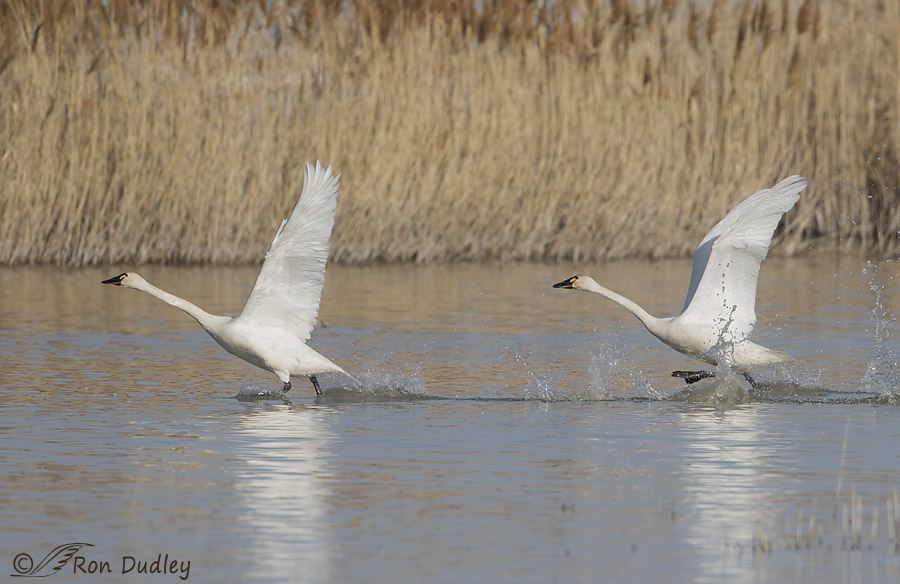
1/4000, f/7.1. ISO 500, Canon 7D Mark II, Canon EF500mm f/4L IS II USM +1.4 tc, not baited, set up or called in
I believe my pickup was the first vehicle on the loop road so some of the swans were still fairly close to the road. After watching them for a while a few decided to take off.
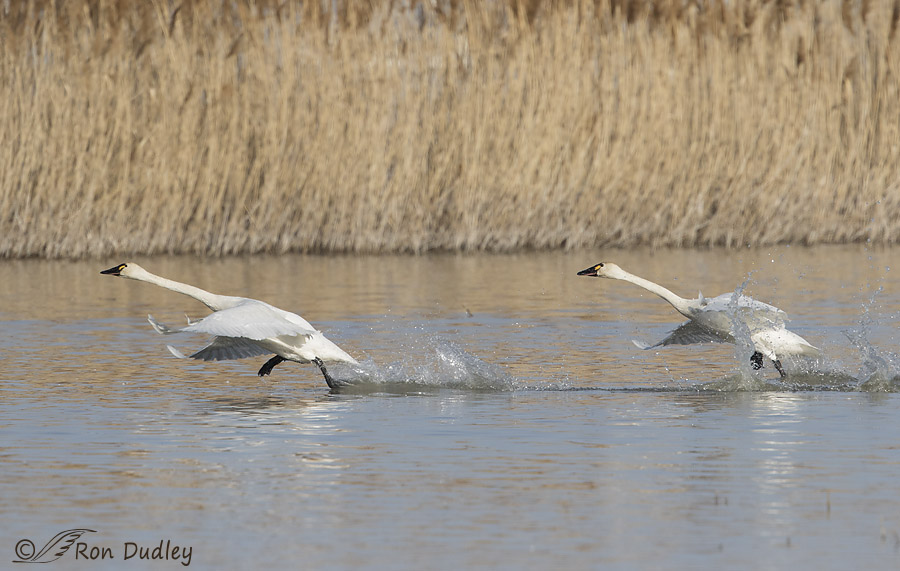
1/3200, f/7.1. ISO 500, Canon 7D Mark II, Canon EF500mm f/4L IS II USM +1.4 tc, not baited, set up or called in
These large, heavy (up to 18 lbs.) birds need a long runway to become airborne and when they’re in groups the photographer must decide how many birds to try to keep in the frame. I settled on two but I wasn’t always successful.
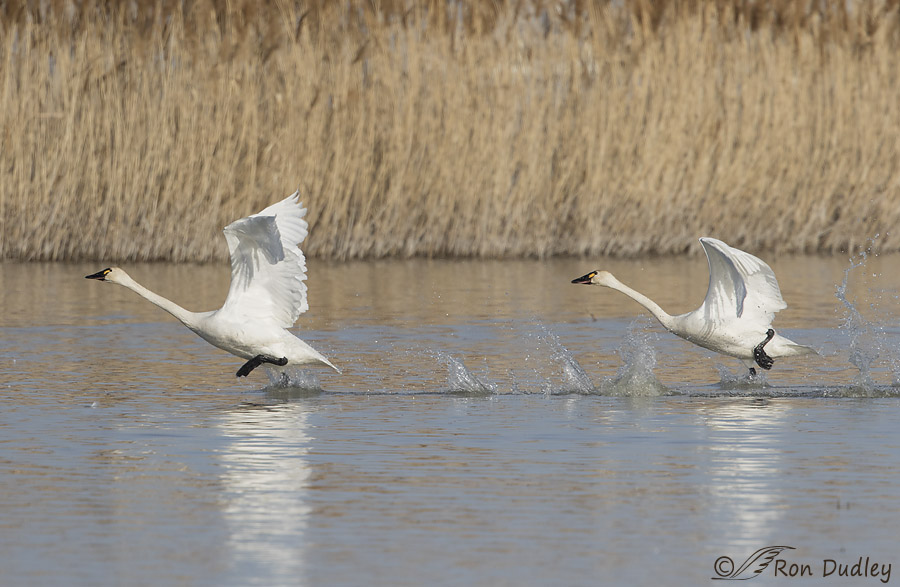
1/3200, f/7.1. ISO 500, Canon 7D Mark II, Canon EF500mm f/4L IS II USM +1.4 tc, not baited, set up or called in
I think the water splashes of running birds add a lot to the image…
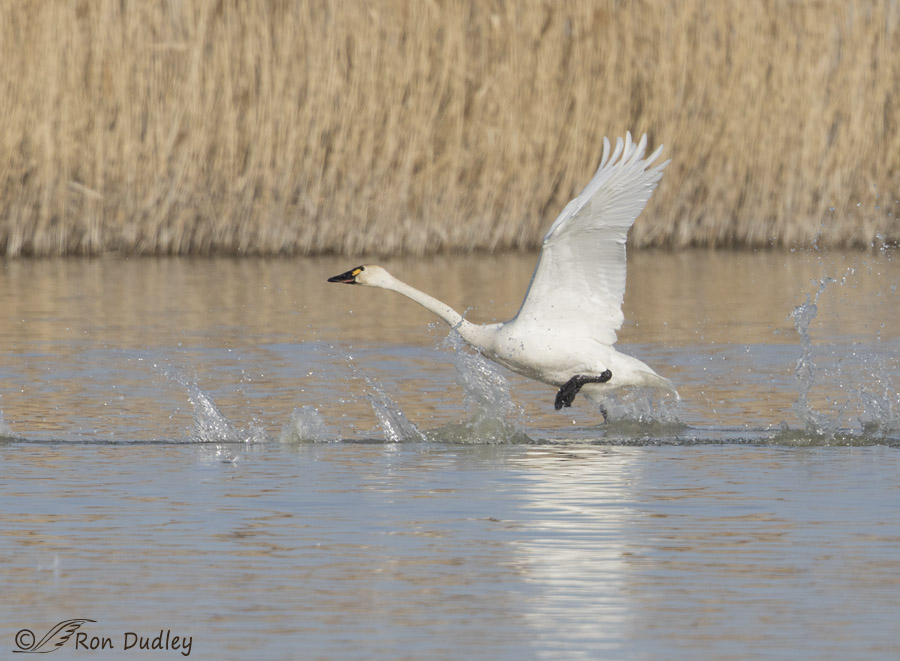
1/3200, f/7.1. ISO 500, Canon 7D Mark II, Canon EF500mm f/4L IS II USM +1.4 tc, not baited, set up or called in
and they can help to fill in the blanks when, as I did, the photographer clips the bird in front and is forced to crop it out of the image. Here the water splash of the lead swan gives away its presence out of frame to the left.
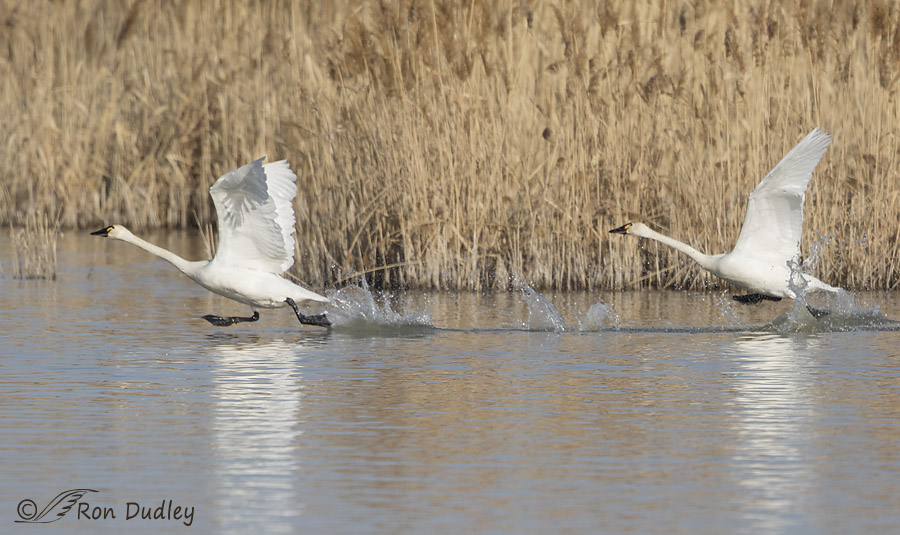
1/4000, f/7.1. ISO 500, Canon 7D Mark II, Canon EF500mm f/4L IS II USM +1.4 tc, not baited, set up or called in
The posture and leg position of the bird on the left makes the effort required to become airborne obvious.
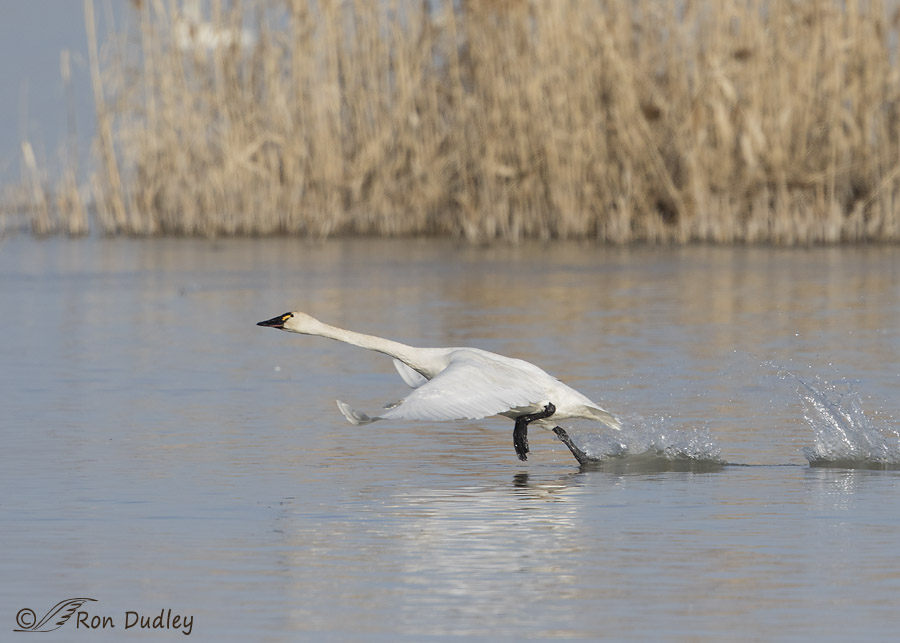
1/4000, f/7.1. ISO 500, Canon 7D Mark II, Canon EF500mm f/4L IS II USM +1.4 tc, not baited, set up or called in
Here I’ve cropped to only include the swan in front and I chose to center it in the composition so that two water splashes are included.
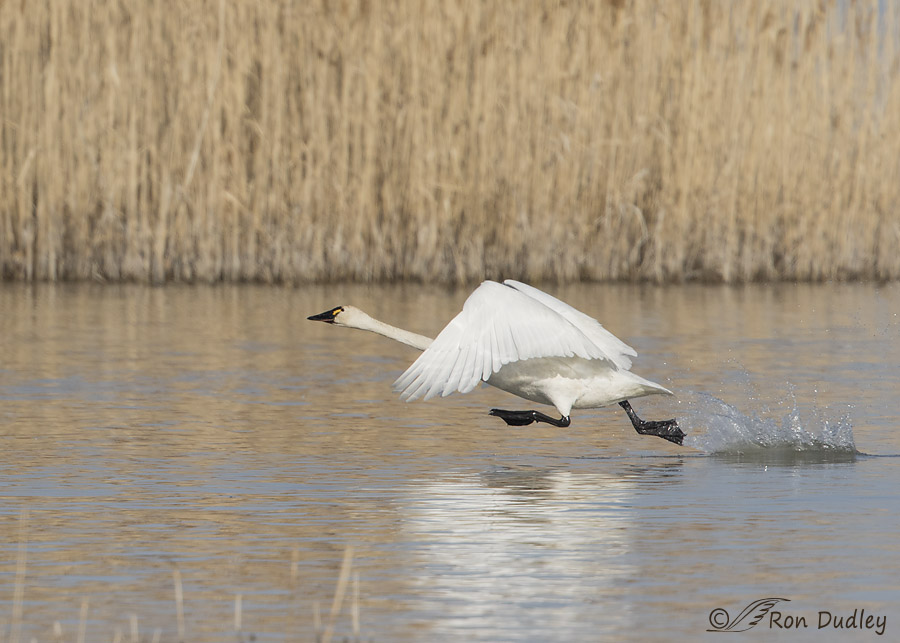
1/3200, f/7.1. ISO 500, Canon 7D Mark II, Canon EF500mm f/4L IS II USM +1.4 tc, not baited, set up or called in
In this last image the birds weren’t anywhere near airborne yet but images after this one became cluttered with other swans on the water and by then they were too far past me anyway.
I found these bright white birds to be a difficult exposure and to compound the problem I overexposed them slightly so some of the whites don’t show much detail but none of them are “blown”. I also have more shutter speed than I needed. There are lots of decisions to be made quickly in situations like this and sometimes I don’t make the best ones.
But I do try to learn from my errors.
Ron
Note: I also photographed many swans in full flight and I’ll post a few of those images at a later time.


Due to the severity of our winter, the waterfowl have had a very tough time…water covered with ice and snow, make finding food very difficult…firecrackers have been used to chase them away from lawns and gardens in their desperate search for food. Very Sad!
Beautiful crisp clear photos of take off. Looks like they are walking over water. I really admire how fast your camera works!!!
These show how much work is involved in taking off. Beautiful birds and I relate to deciding how many splashes to include and where to crop. I think you made very successful choices and hope I can see some of these in the coming season.
Such wonderful shots Ron! Thanks so much for sharing!
Charlotte
I should be so lucky to make your exposure mistakes!
Well, they look better now than they did coming out of the camera, April. Thank goodness for the option to shoot and process in RAW.
Walking on water is one thing – but running on water adds an extra ‘degree of difficulty’.
Love the splashes. And the grace. And the beauty.
Mia said she took 400 images. I assume your count was similar…
I took a total of 493 shots of the swans, EC. My faster burst rate probably accounts for some of that but often Mia shoots more images than I do. Thank you.
I saw one at Bosque del Apache in January and they seldom show up there.
John, There were many thousands of them at Bear River yesterday. Quite the sight to see!
Really enjoyed this series. I felt like if I scrolled fast enough, I might take off with them.
Ha, I actually do something like that with these types of shots when I’m reviewing them, Arwen. It works kind of like a flip-book on the screen and it’s pretty neat to watch.
Since I have been working in wildlife rehabilitation for 10 years a friend thought I would enjoy Birding in Utah, she added me to the group. I have been enjoying your photography and post immensely. For some time I have been looking at a new DSLR cameras for wildlife shots and I find the choices overwhelming. Four years ago I wanted to buy a Cannon but I let a salesman talk my daughter into a Sony alpha 380 we have not been happy with it for wildlife. Could you suggest a good camera body to begin with?
April, recommending a camera to someone is a big deal that I don’t take lightly. I’d need to know more about your photography experience, what lenses you have and might possibly get in the future, the types of photography you’d likely concentrate on and whether you’re likely to branch out and what your budget is.
That said, I can say this much. If it were me in your shoes I’d definitely stick with either Canon or Nikon, for a variety of reasons.
Ron Dudley, Beautiful series of the Tundra swans taking off. One thought I had was that this series might benefit from shooting in HD 16:9 format rather than 3:2 35 mm format, just a thought anyway. Thanks for sharing, the patience you have is something I hope to attain one day!
Interesting idea, William. I wish I had as much patience in other aspects of my life as I do in photography. Thanks very much.
Just like a Starlifter taking off! Nice series – as usual.
Thanks Ron!
Thank you, Karen.
This is an amazing series. I got tired just looking at the efforts they were making to take off (I wasn’t remembering that these shots were probably taken in a burst and so they don’t cover a long period of time…)
Susan, yes, this was a burst but it only covers about half the time it took the birds to become airborne. A huge expenditure of energy must be required to get them in the air.